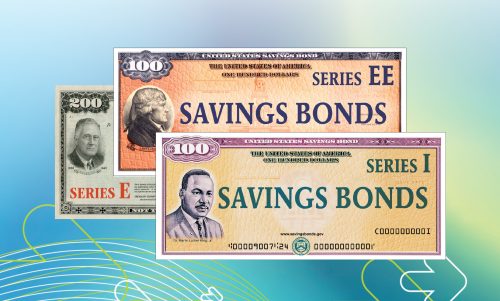- IRAs are investment accounts that help you save for retirement.
- Funds deposited in IRAs can be invested in a host of financial products until retirement.
- Traditional and Roth IRAs feature different contribution and withdrawal considerations as well as different tax benefits.
Having a solid financial plan for retirement can lead to a strong path to living comfortably without financial worry or burdens during your retirement years. One of the top solutions to building a strong retirement fund is opening an IRA.
So what is an IRA, and is it right for you? Read more about why IRAs are a powerful, proactive tool for your retirement savings. Your future self will thank you.
What’s an IRA?
An individual retirement arrangement, or IRA, is a tax-advantaged investment account designed to provide you with financial security in your retirement years. Colloquially (and more commonly) referred to as individual retirement accounts, IRAs are offered by financial institutions to anyone with earned income.
How does an IRA work?
After opening an IRA, any funds deposited therein can be invested in a combination of stocks, bonds, exchange-traded funds (ETFs), mutual funds and other financial product options. Individuals may oversee and rearrange their asset allocation as they wish or defer to an investment manager.
Like with other retirement accounts, the funds you deposit into an IRA are meant to stay and grow there at least until you turn 59 ½ years old. Early withdrawals before reaching 59 ½ may be subject to ordinary income taxes and a 10% early withdrawal penalty.
The Internal Revenue Service (IRS) also has established IRA contribution limits. In 2023, the total annual contribution you can make to all of your IRAs is $6,500. However, for individuals who will be age 50 or older by the end of the calendar year, the total annual catch-up contribution you can make to your IRAs is $1,000, for a total of 7,500. There’s no age restriction to making IRA contributions, as long as you have earned income. You can even open an IRA for your child.
While other investment options like brokerage accounts offer similar financial products to IRAs as well as more freedom when it comes to contributions and withdrawals, IRAs offer unique tax breaks, which vary by type. Understanding the basics of how an IRA account works will prepare you to choose which type is right for you. Although several different types of IRAs are out there, two main types of IRAs are most popular.
Types of IRAs
The two primary types of IRAs that individuals open are traditional IRAs and Roth IRAs.
Other types of IRAs for various situations (more on that below) are also available for those in need of a more unique retirement investment option.
But first, let’s compare the two main types.
Traditional IRA
With a traditional IRA, you enjoy tax benefits on your contribution, but have to pay taxes when you withdraw funds. In other words, contributions are made with pre-tax dollars and the taxes on the contributions and any subsequent growth are tax-deferred. Traditional IRA contributions are tax deductible (though that benefit may diminish at higher income levels and with access to employer-sponsored plans such as a 401[k]).
If you have a traditional IRA, you can start withdrawing from your IRA without penalty starting at age 59 ½ and you must begin taking required minimum distributions (RMDs) once you reach age 73. When you finally do withdraw contributions during retirement, the amount of taxes you pay will be based on your tax bracket at the time of the IRA withdrawal, so an IRA is ideal for those who anticipate a low tax bill in retirement. However, if you suspect your tax bracket will increase between now and retirement and that you would benefit from being taxed within a lower tax bracket, you may want to consider a Roth IRA instead.
Roth IRA
A Roth IRA works differently from a traditional IRA. You fund a Roth IRA with after-tax dollars, and there’s no tax deduction when you contribute. Your invested funds experience tax-free growth and when you eventually make withdrawals, there are no remaining taxes to pay. The money you put into a Roth IRA — and everything it earns — is yours, free and clear.
Depending on your filing status and modified adjusted gross income (AGI), you may encounter reduced Roth IRA contribution limits, where high earners may not be able to contribute as much money if any. In tax year 2023, the income limits for individuals and married couples filing jointly are $144,000 and $228,000, respectively.
The other big difference between a traditional IRA and a Roth IRA is that contributions to your Roth IRA can be withdrawn at any time, once the account has been open for five years. There may be a penalty for early withdrawal of earnings though, so check the guidelines beforehand. Additionally, once the account has been opened for five years you can make qualified distributions on the growth, which is income tax and penalty free. There are also no RMDs with Roth IRAs as there are with traditional IRAs.
Can my employer contribute to my IRA?
You may be able to maximize your IRA contributions in other ways, namely if your employer offers an IRA matching program. There are three common IRA options that employers may offer:
- Payroll Deduction IRA: Your IRA contributions — whether for traditional or Roth — come out of your paycheck automatically via payroll deduction.
- SEP: Simplified Employee Pension plans are ideal for self-employed people and small business owners. A SEP IRA allows employers of any size to contribute to their employee plans and receive a tax deduction.
- SIMPLE IRA Plan: A Savings Incentive Match Plan for Employees lets employees choose to make a salary reduction contribution, while the employer makes a matching contribution.
There’s also what’s known as a rollover IRA, in which you transfer funds from other retirement accounts, such as 401(k) savings from an old job.
Reach out to your human resources representative and/or a financial advisor to find out if any of these employer IRAs are available to you, and if so, what may be the best for you. Note that not all employers offer such options.
With all that in mind, a big question remains: Should you invest in an IRA?
IRA tax benefits
IRAs offer unique tax benefits that other investment vehicles don’t:
- Traditional IRAs offer tax deductions on your contributions and tax deferment on withdrawals. If you’re just above the threshold of a given tax bracket, the right amount of tax deductions can lower you to the next bracket down, which would mean paying less taxes on your upcoming tax return.
- Roth IRAs offer tax-free growth on all invested funds as well as tax-free withdrawals in retirement.
- Reallocating your IRA funds from one financial product to another won’t induce capital gains taxes year-to-year, taxes are only due upon withdrawals for traditional IRAs. Since your Roth IRA funds have already been taxed, they won’t induce any taxes at all.
IRA FAQ
Want to learn more? Check out these frequently asked questions about IRAs.
Is it better to have a 401(k) or IRA?
There are many factors to consider when deciding where to invest your retirement savings. You can choose a traditional IRA, a Roth IRA or 401(k), or some combination of retirement accounts, as many do. It’s even possible to transfer funds from one account to another. Do you prefer to manage your retirement account yourself or leave that to your employer? Do you want to pay your taxes upfront or defer them until retirement? Speak to a financial planner and your tax advisor to determine the best strategy for your retirement.
How much does an IRA earn per year?
It depends on your portfolio and how much you contribute. Thanks to compounding interest, though, with consistent contributions, your IRA can grow over the years, but does carry some risk.
Investing in an IRA
Investing in an IRA is investing in your future. Even if you already have other retirement plans like a 401(k) or a pension, an IRA can be an additional source of funding. The earlier you start your IRA contributions, the more funds you may have during your retirement. So start asking yourself the right questions now.










